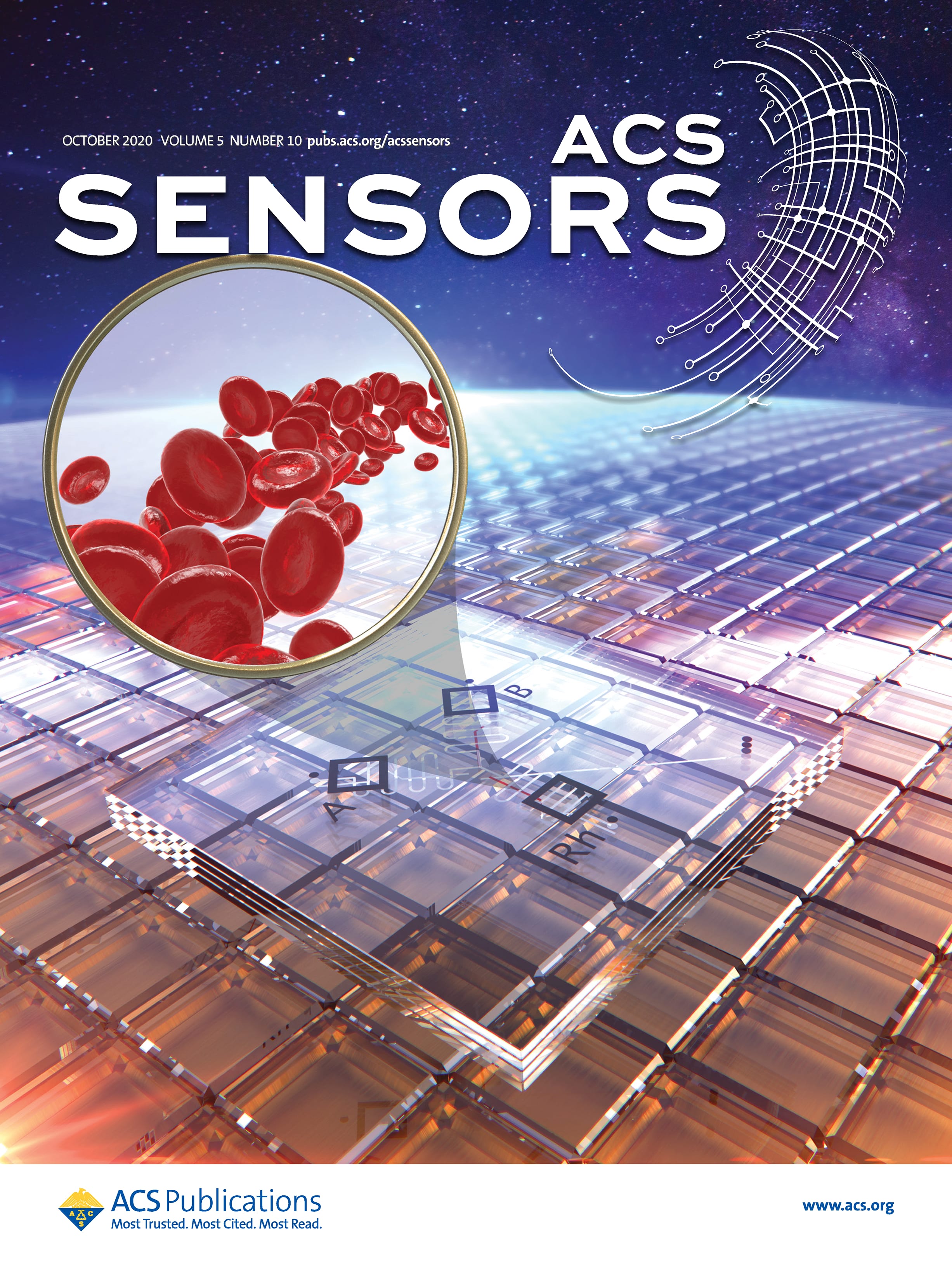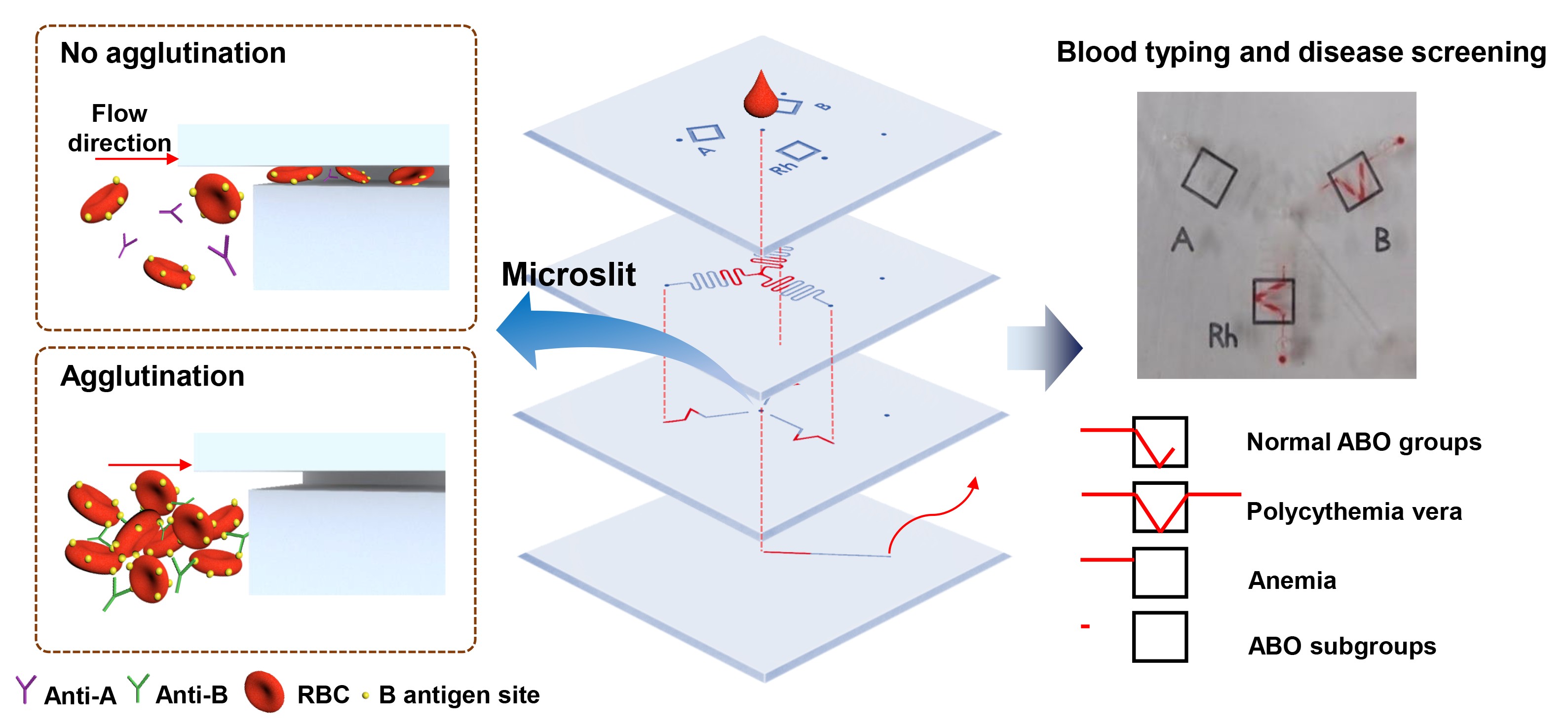In critical moments, such as when a patient is bleeding profusely or unresponsive, medical staff members need to be able to quickly determine the patient’s blood type. However, for some patients, the low expression of A and B antigens on red blood cells (i.e., weak ABO subgroups) can lead to poor reactivity in the standard serological method of blood-type analysis. Several methods have been developed to distinguish ABO subgroups, including column agglutination, gel testing, and molecular genetic analysis. However, expensive reagents/instrumentation may prevent their use in resource-limited regions of the world. In addition to basic blood-typing, blood-based diseases account for a significant fraction of global mortality rates. For instance, polycythemia vera (PV), a condition in which the body produces too many blood cells, is associated with increased risks of thromboembolic events, myelofibrosis, and acute myeloid leukemia. Meanwhile, anemia, a blood disease characterized by a smaller mean corpuscular volume and low hematocrit levels, can cause hemolysis, bone marrow hyperplasia, and splenomegaly. However, due to symptom similarity, these diseases can be difficult to identify and distinguish from other diseases without multiple medical diagnoses. As a result, they often require expensive testing, bulky laboratory equipment, and well-trained personnel, which can be particularly difficult for developing countries. Clearly, there is a need for simple and inexpensive devices that can provide rapid blood group typing and blood-based primary disease screening. The development of such point-of-care testing (POCT) systems could address these needs.

This study is highlighted as a Supplementary Cover of the ACS Sensors.
Several POCT platforms for blood typing have been developed for paper-based and polymeric microfluidic devices. In these devices, the mechanism of detection is based on the agglutination reaction of red blood cells (RBCs) when antigens on their surfaces are exposed to corresponding antibodies. However, the finite diffusion and incubation times of the blood sample as it passes through the paper network limit the immune interaction between the RBCs and antibodies, which makes it difficult to distinguish weakly interacting blood subgroups. As an alternative, polymeric microfluidic devices can be ideal POCT systems for blood typing as they enable detection to be high-throughput and rapid while using reduced sample volumes and low reagent consumption. However, current microfluidic designs have only enabled basic blood typing analysis. The added function of blood disease screening has not yet been incorporated.

Illustration of the blood type and disease primary screening process. A drop of blood flows sequentially through the microfluidic chip, dividing the RBCs into three serpentine reaction channels where they can react with preloaded antibodies in the micromixers. Agglutinated RBCs that result from the specific antibody-antigen interaction are blocked by the microslits, resulting in red lines that appear in the observation area.
Here, we used preloaded antibodies (anti-A, anti-B, and anti-D) to interact with injected whole blood cells to cause an agglutination reaction that blocks a microslit in the microfluidic channel to accumulate red blood cells and form a visible red line that can be easily read to determine the blood type. Moreover, the different blood density and agglutination properties of normal and subtype blood groups, as well as different blood diseases, including thalassemia and polycythemia vera, generate different lengths of blood agglutination within the channels, which allows us to successfully screen these various conditions in as little as 2 min. The required blood volume for each test is just 3 μL, which can be obtained by minimally invasive finger-pricking. By adopting microbeads and various nanomaterials functionalized with antibodies, we expect that various particle aggregation-based blood immunoassays can be realized in this system.
The team would like to acknowledge and appreciate the financial support from the Ministry of Science and Technology (MOST) and NTU’s Higher Education Sprout Project.
Contact: Prof. Chien-Fu Chen
This email address is being protected from spambots. You need JavaScript enabled to view it.
More information:
“A Multifunctional Microfluidic Device for Blood Typing and Primary Screening of Blood Disease,” ACS Sensors
https://pubs.acs.org/doi/abs/10.1021/acssensors.0c00969
